Central African Republic
by William Daniels
This is the story of a country with a strange name that nobody can identify on a map, and which has always existed on the edge of the abyss.
Curated by Apratim Saha
This time it began on a Sunday – 24 March 2013. The Séléka, a predominantly Muslim rebel coalition from the north of the country, took to power during a coup d’état. Crimes were committed. In response, Christian anti-balaka militiamen also committed atrocities. Tens of thousands of Muslims fled the capital, Bangui, and the west of the country. The Central African Republic was swallowed up by civil war.
Between 2013 and 2016 William travelled there ten times. He photographed a contemporary war that is a mirror image of other outbursts of violence and humanitarian crises.
The country is not yet sixty years old but it has already experienced five coups. Among the presidents that have been overthrown is Jean-Bedel Bokassa, a megalomaniac tyrant, who, wearing a crown and an ermine-lined cloak, proclaimed himself Emperor in 1977 in a ceremony that burned 20% of the country’s annual budget.
Before it achieved independence, the Central African Republic, then called Ubangi-Shari, represented the scrapheap for France’s colonial administrators. It was a place where some companies used forced labour to exploit the country’s natural resources.
For the CAR is rich: with its fertile soil, minerals and forests, it should provide its population with a decent quality of life. But that is not the case. Poor management by a phantom administration, corruption, an endless series of crises, and pillage have condemned this black hole on the map to be the world’s poorest nation but one.
Armed militia sustain a permanent atmosphere of insecurity, justice is totally absent, and the country’s youth – without employment – provide an inexhaustible reserve of cannon fodder.
This is the story of a country living on borrowed time.
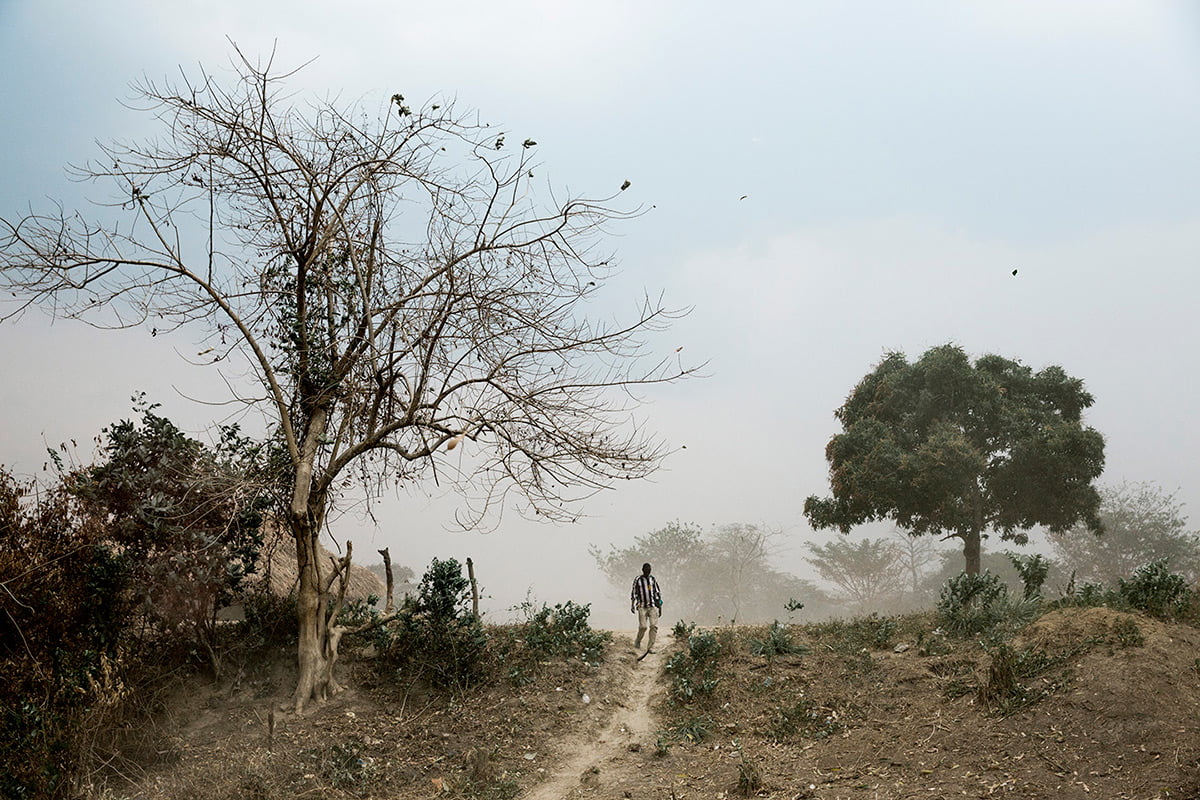 Zawara, Central African Republic. Minutes after the storm. © William Daniels
Zawara, Central African Republic. Minutes after the storm. © William Daniels
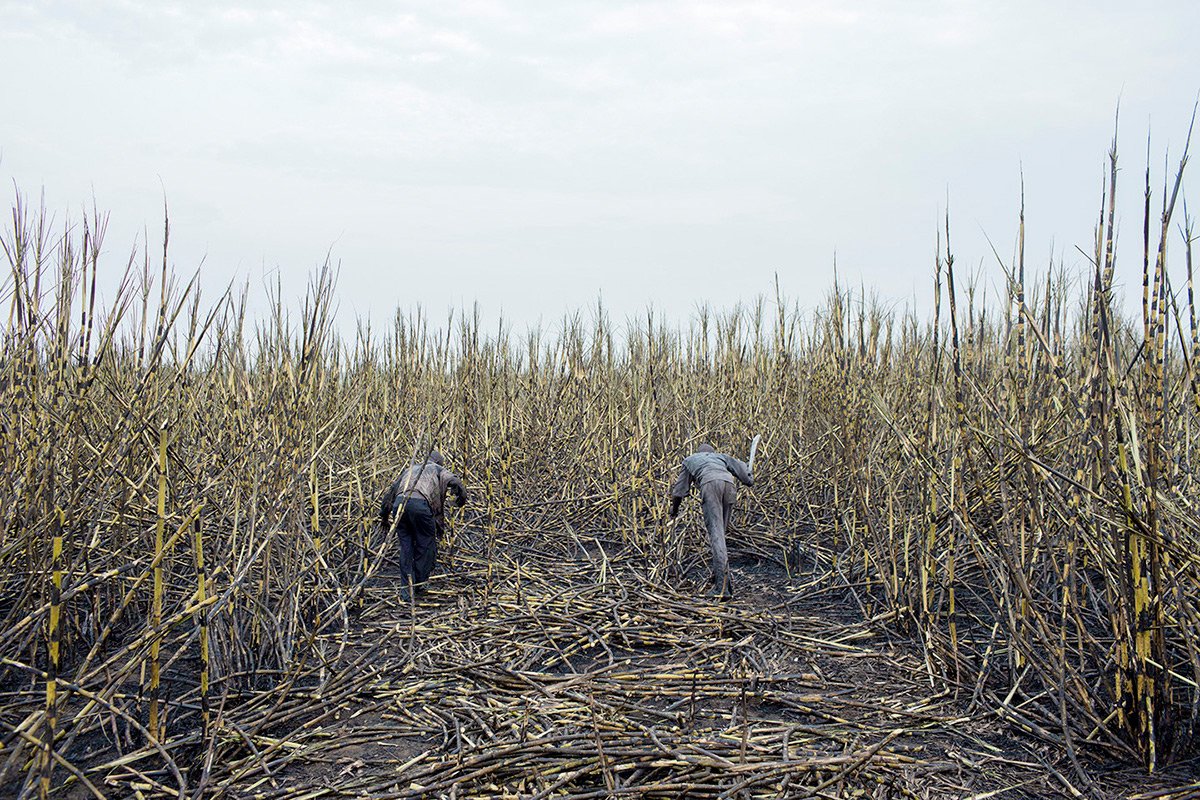 Ngakobo, Central African Republic. Workers cutting sugar cane plants in Ngakobo. © William Daniels
Ngakobo, Central African Republic. Workers cutting sugar cane plants in Ngakobo. © William Daniels
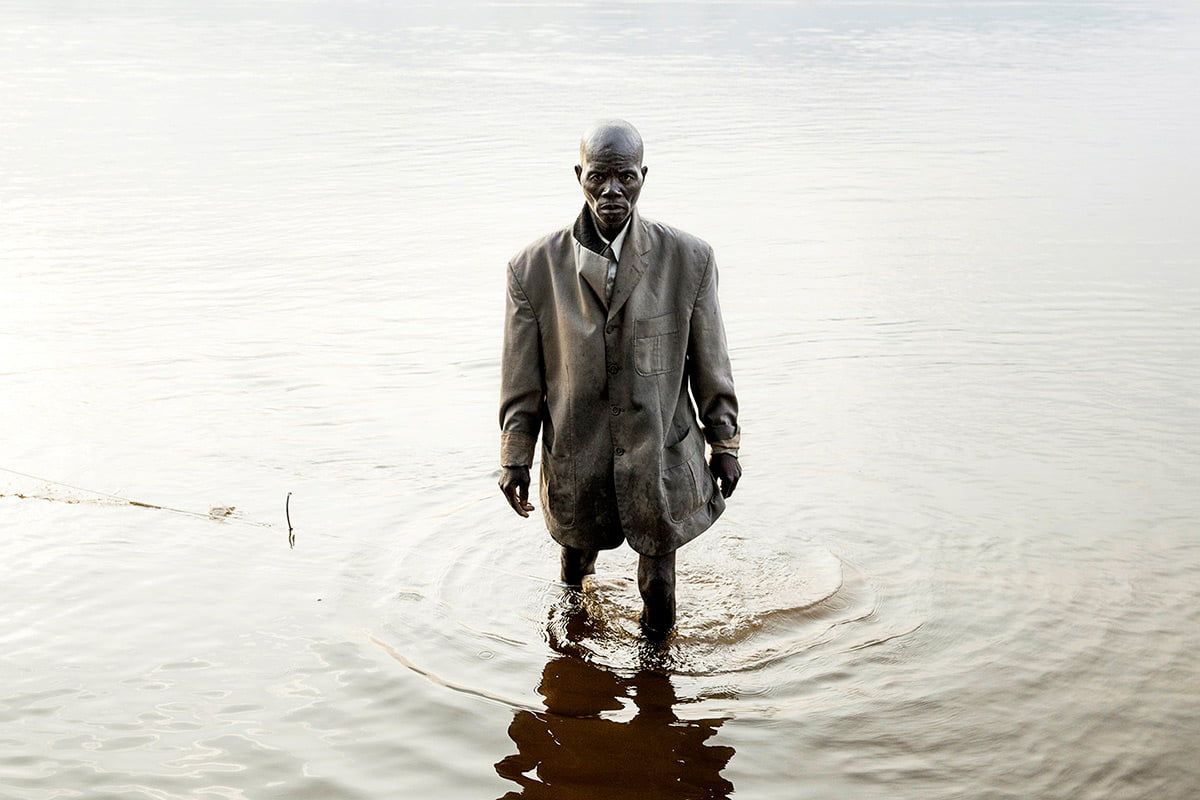 Bangui, Central African Republic. A fisherman dressed for Sunday mass walks in the Oubangui River. © William Daniels
Bangui, Central African Republic. A fisherman dressed for Sunday mass walks in the Oubangui River. © William Daniels
 Near Bangui, Central African Republic. A boy fishing in the Oubangui River. © William Daniels
Near Bangui, Central African Republic. A boy fishing in the Oubangui River. © William Daniels
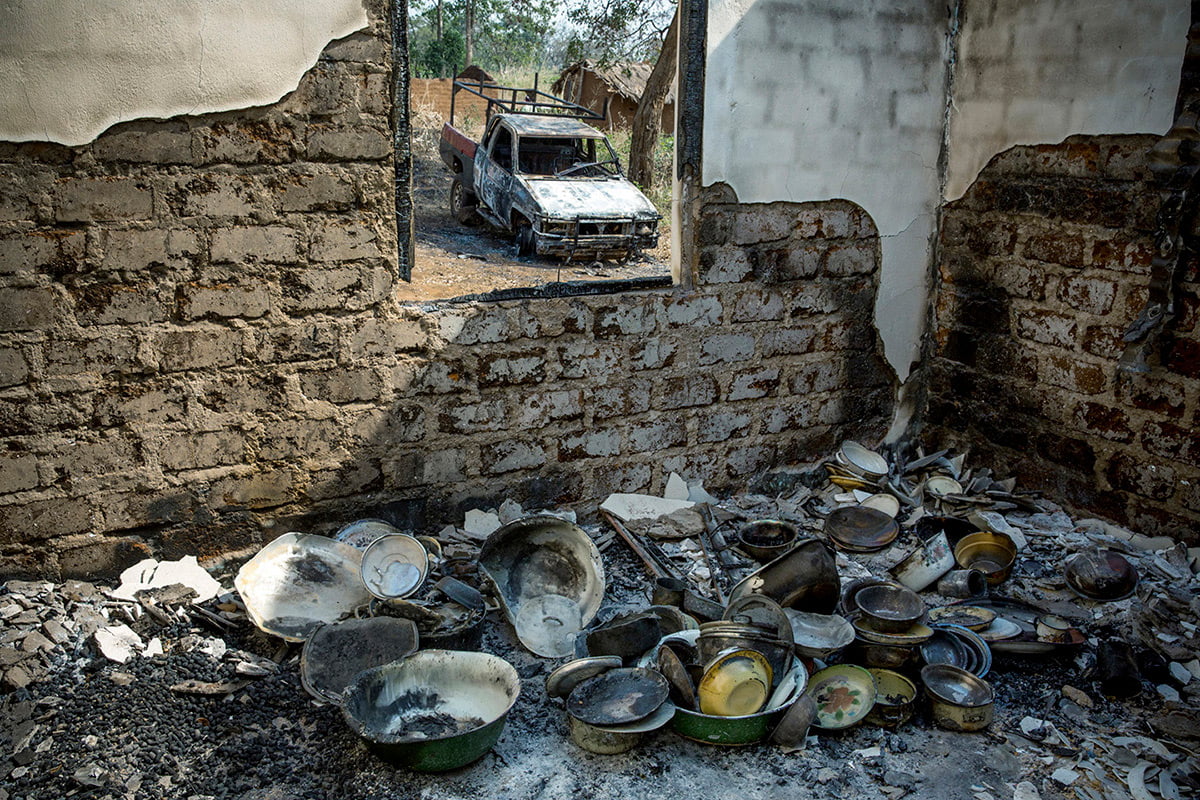 Zawa. Central African Republic. Battered and charred pots and pans in a house that was burned down by Seleka rebels when they had to leave the area. © William Daniels
Zawa. Central African Republic. Battered and charred pots and pans in a house that was burned down by Seleka rebels when they had to leave the area. © William Daniels
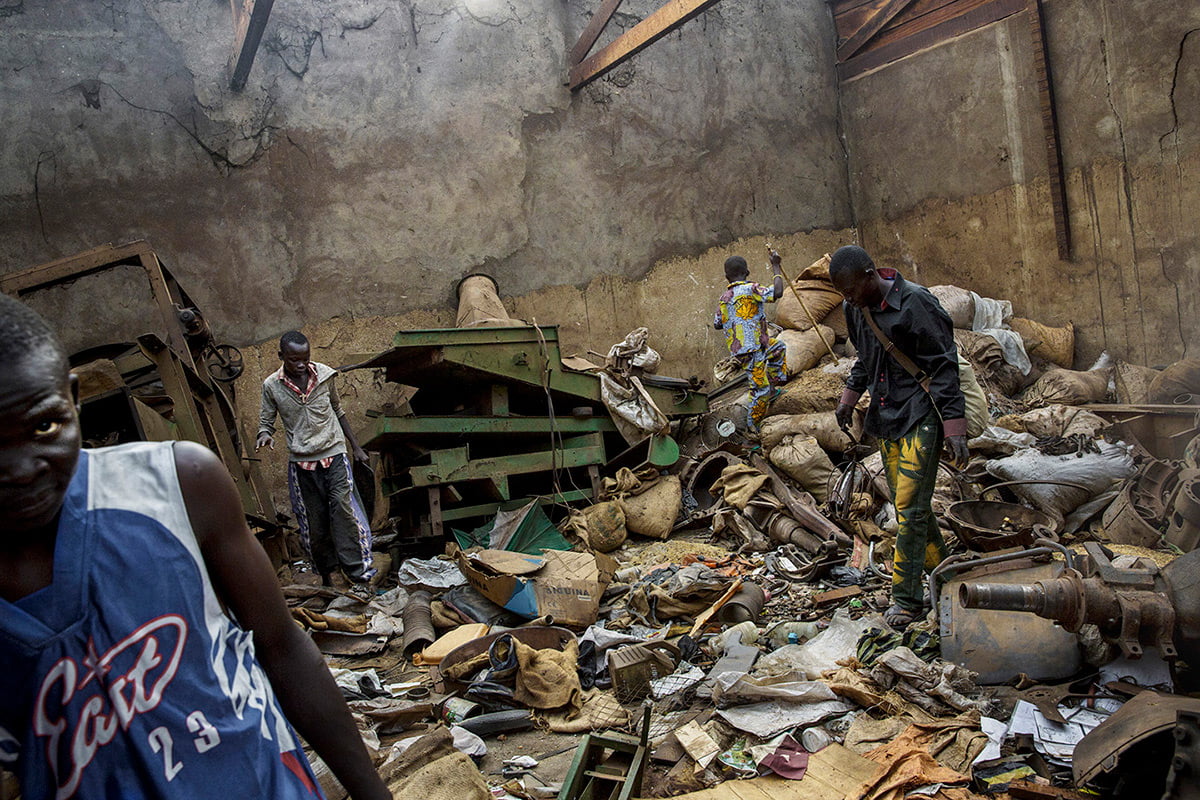 Bangui, Central African Republic. Looters search through a building belonging to a Muslim who fled the city. © William Daniels
Bangui, Central African Republic. Looters search through a building belonging to a Muslim who fled the city. © William Daniels
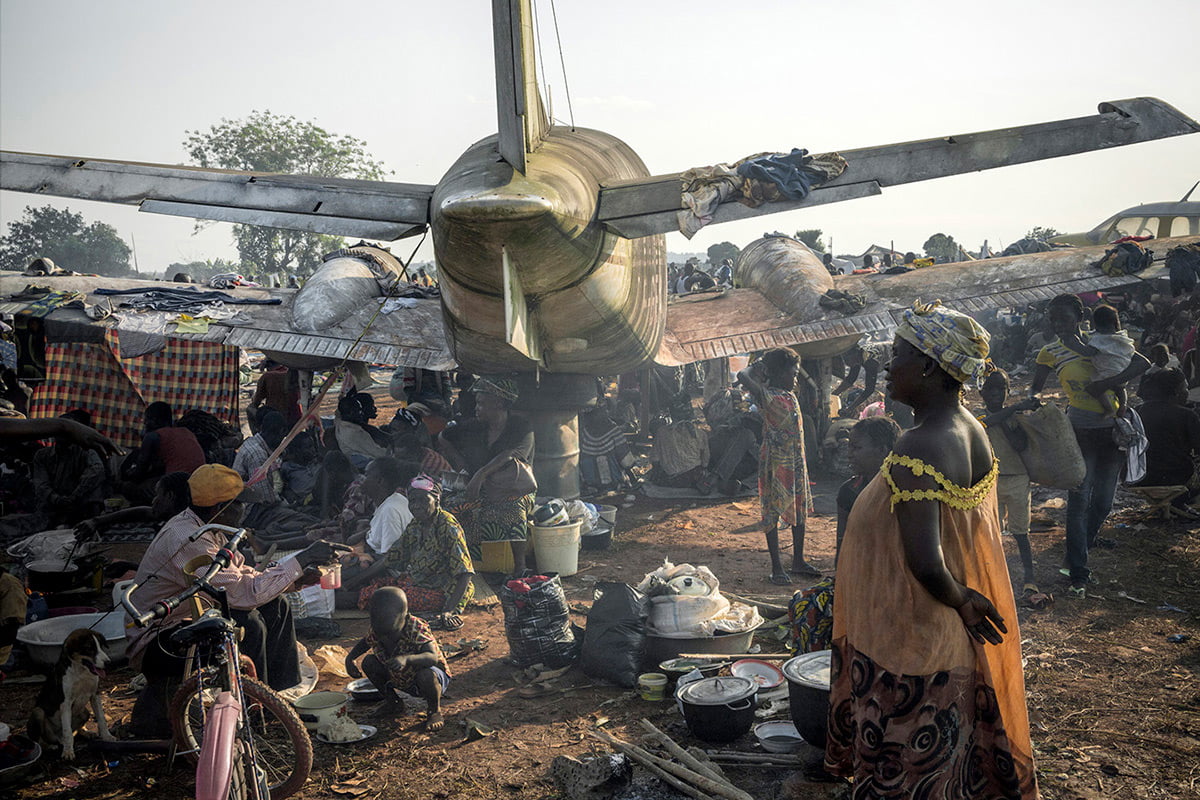 Bangui, Central African Republic. A makeshift camp built by around 100,000 internally displaced people near Bangui’s Mpoko airport. Though food is short and sanitary conditions are poor, people have fled to the airport area where they feel safe from attack from Seleka fighters due to the French army presence near the airport. © William Daniels
Bangui, Central African Republic. A makeshift camp built by around 100,000 internally displaced people near Bangui’s Mpoko airport. Though food is short and sanitary conditions are poor, people have fled to the airport area where they feel safe from attack from Seleka fighters due to the French army presence near the airport. © William Daniels
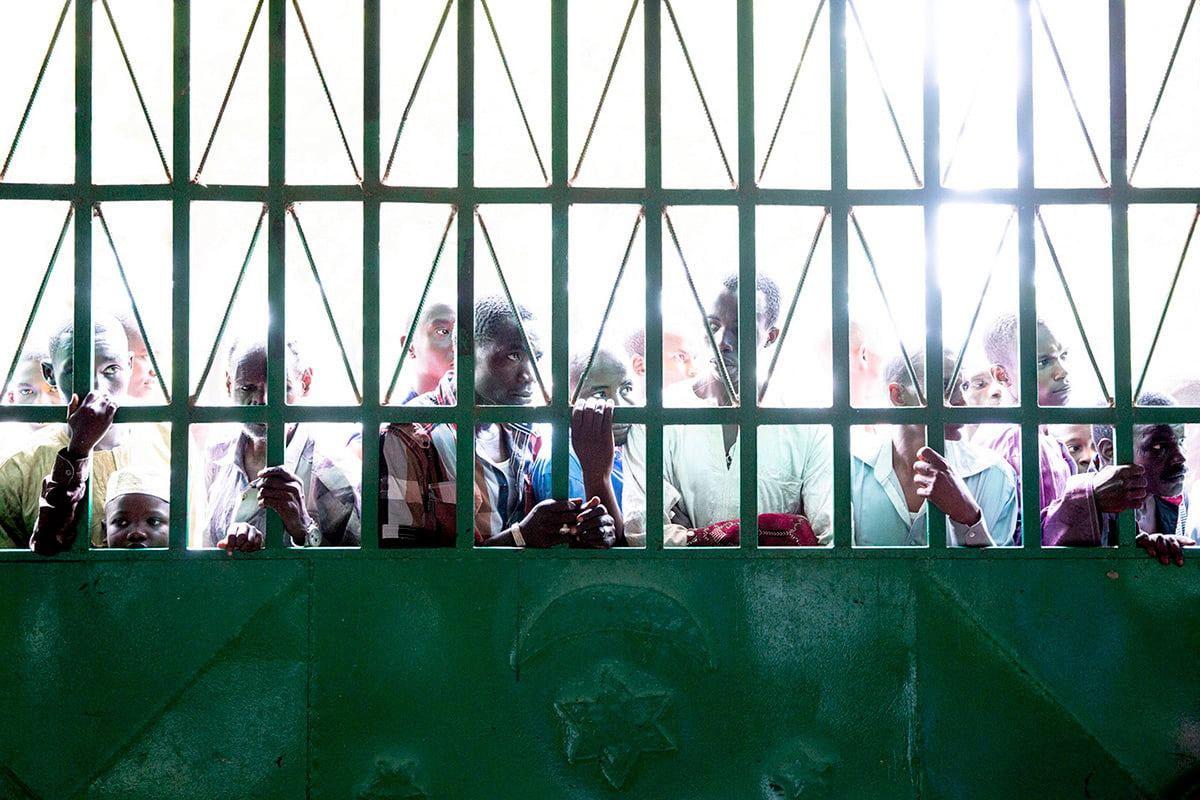 Bangui, Central African Republic. Displaced Muslims listen to a speech from the Minister of Reconciliation and the Imam after Friday prayers in the main mosque of the Muslim enclave of PK5 where about 700 Muslims are camping out in the yard of the mosque. © William Daniels
Bangui, Central African Republic. Displaced Muslims listen to a speech from the Minister of Reconciliation and the Imam after Friday prayers in the main mosque of the Muslim enclave of PK5 where about 700 Muslims are camping out in the yard of the mosque. © William Daniels
 Zemio, Central African Republic. A man lies in a hospital bed receiving treatment for pneumonia. © William Daniels
Zemio, Central African Republic. A man lies in a hospital bed receiving treatment for pneumonia. © William Daniels
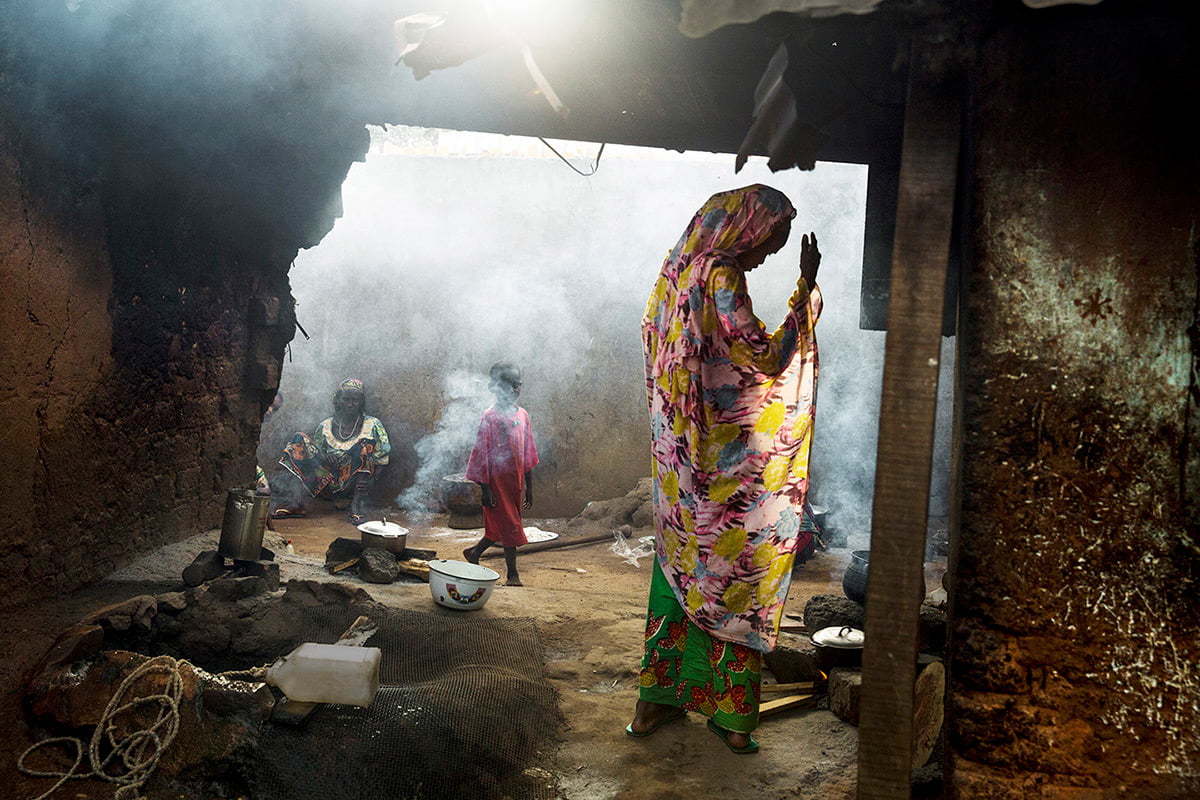 Boda, Central African Republic. Women and children living in the Muslim enclave of Boda. About 11,000 Muslims are trapped in the centre of Boda with food supplies running out and health care at a minimum. Any Muslims who try to leave the enclave can be attacked by Anti-Balaka. © William Daniels
Boda, Central African Republic. Women and children living in the Muslim enclave of Boda. About 11,000 Muslims are trapped in the centre of Boda with food supplies running out and health care at a minimum. Any Muslims who try to leave the enclave can be attacked by Anti-Balaka. © William Daniels
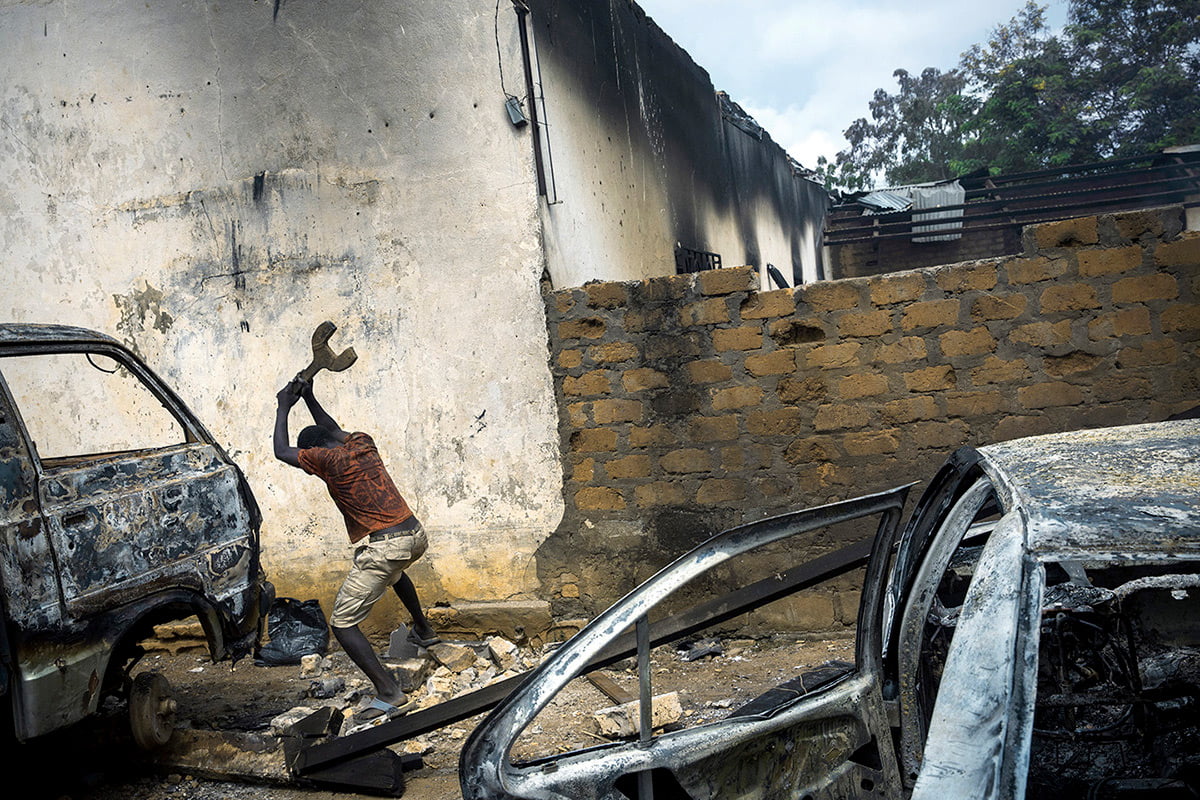 Bangui, Central African Republic. A man is seen next to a looted mosque breaking burnt-out cars that belong to Muslims. © William Daniels
Bangui, Central African Republic. A man is seen next to a looted mosque breaking burnt-out cars that belong to Muslims. © William Daniels
 Bangui, Central African Republic. A soldier from the national army, Central African Army Forces (FACA), wounded in fighting with Seleka rebels waits to be treated at the Community Hospital. © William Daniels
Bangui, Central African Republic. A soldier from the national army, Central African Army Forces (FACA), wounded in fighting with Seleka rebels waits to be treated at the Community Hospital. © William Daniels
 Ndassima, Central African Republic. Ndassima gold mine near Bambari, the largest in CAR, where several hundred miners work, controlled by ex-Seleka General Ali Daras who collects protection money from the workers. © William Daniels
Ndassima, Central African Republic. Ndassima gold mine near Bambari, the largest in CAR, where several hundred miners work, controlled by ex-Seleka General Ali Daras who collects protection money from the workers. © William Daniels
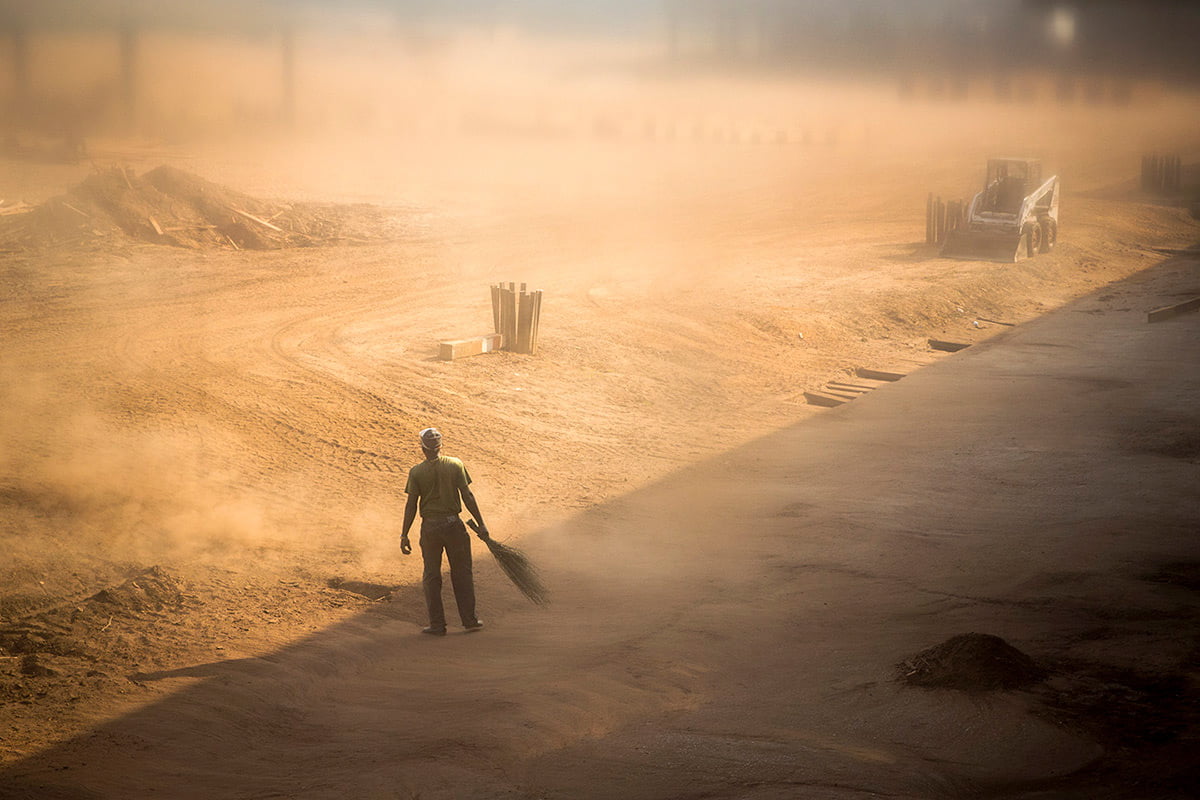 Mambelé, Central African Republic. A worker is sweeping saw dust in a timber factory. © William Daniels
Mambelé, Central African Republic. A worker is sweeping saw dust in a timber factory. © William Daniels
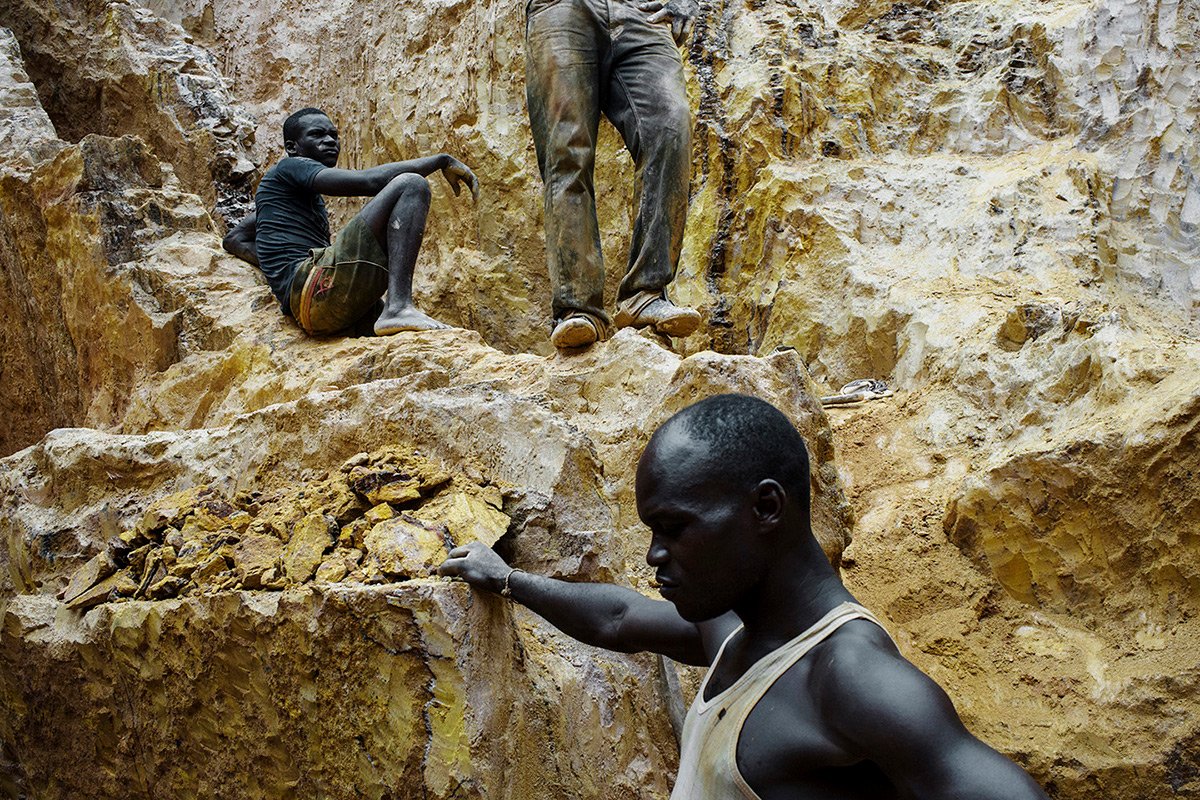 Ndassima, Central African Republic. Ndassima gold mine near Bambari, the largest in CAR, controlled by rebel militias. © William Daniels
Ndassima, Central African Republic. Ndassima gold mine near Bambari, the largest in CAR, controlled by rebel militias. © William Daniels
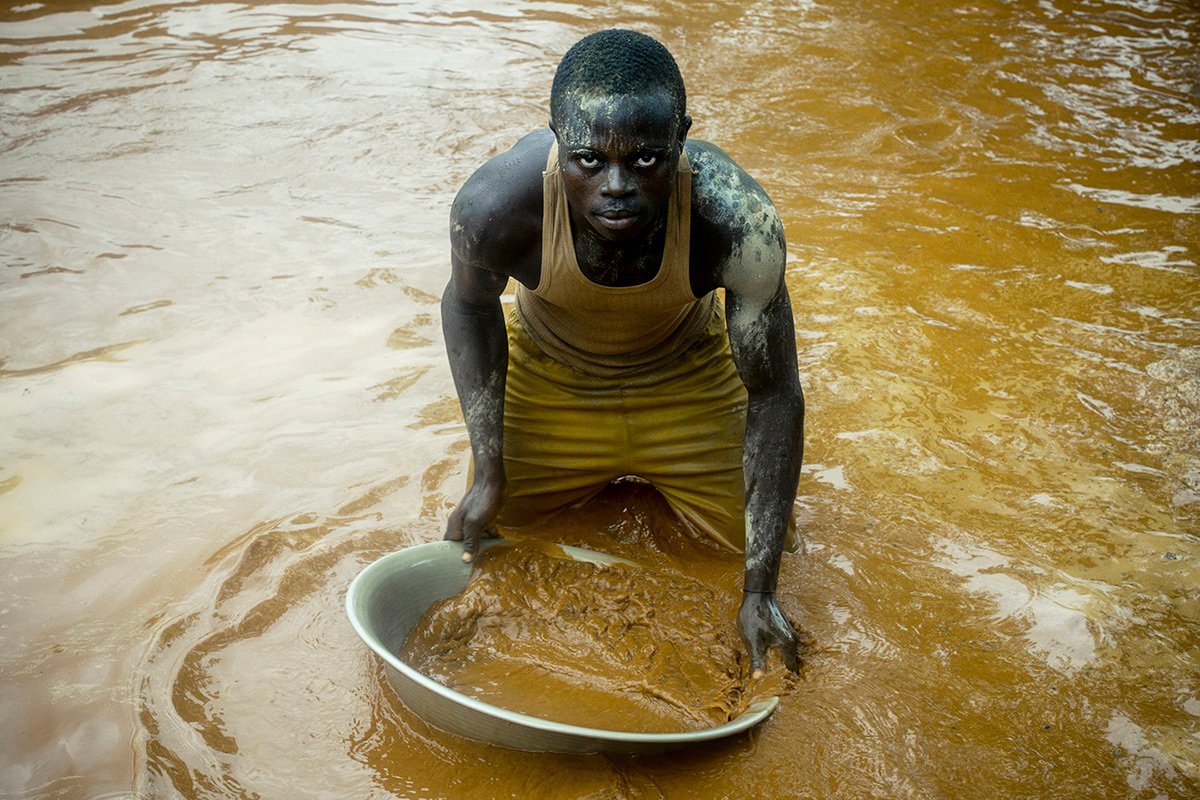 Ndassima, Central African Republic. Ndassima gold mine near Bambari, the largest in CAR. © William Daniels
Ndassima, Central African Republic. Ndassima gold mine near Bambari, the largest in CAR. © William Daniels
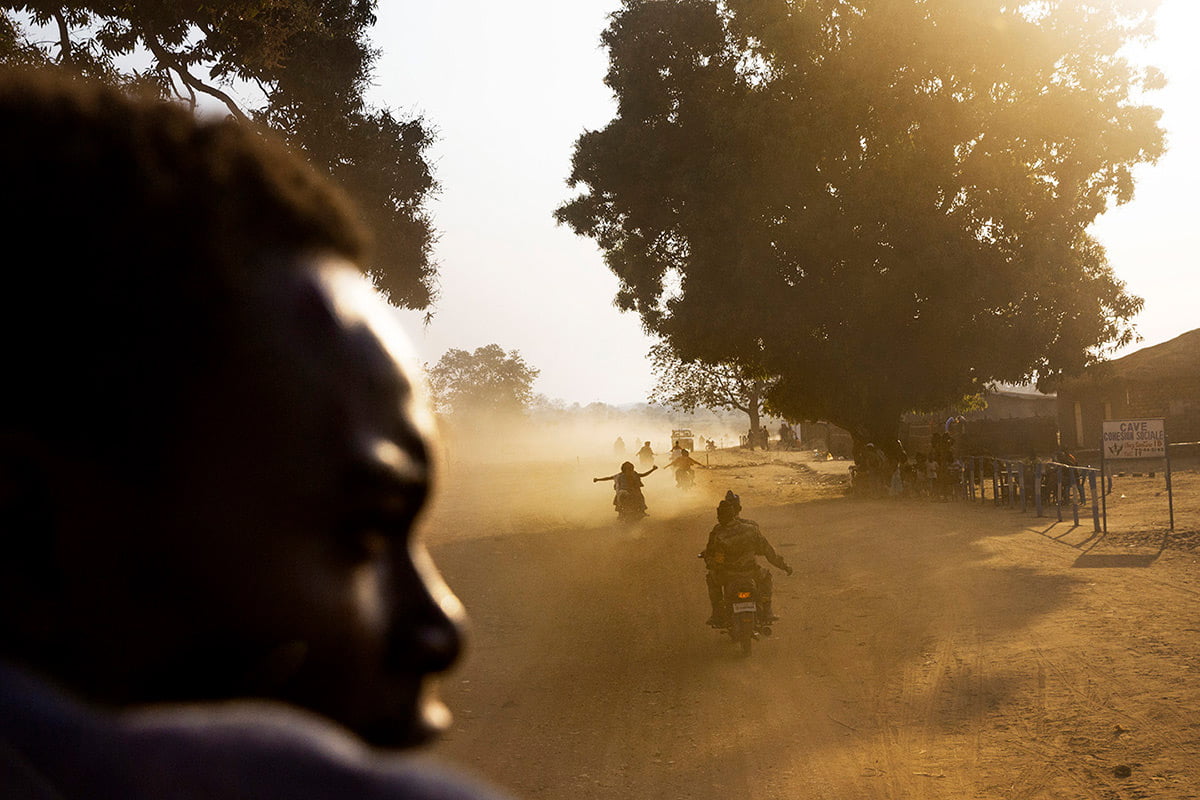 Kaga Bandoro, Central African Republic. Supporters of candidate Gouyomgbia Kongba Zeze during the Presidential elections campaign. © William Daniels
Kaga Bandoro, Central African Republic. Supporters of candidate Gouyomgbia Kongba Zeze during the Presidential elections campaign. © William Daniels
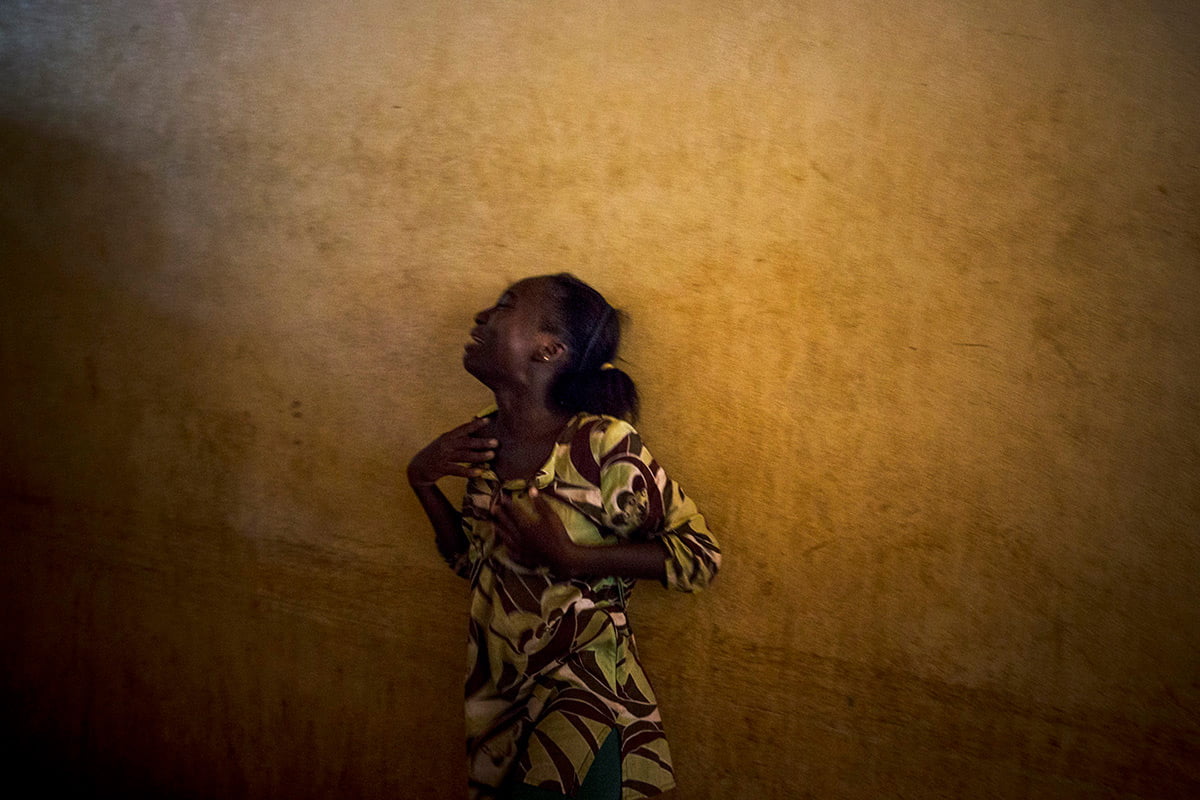 Bangui, Central African Republic. A relative cry on the death of a man who was shot dead by Seleka militiamen the night before. © William Daniels
Bangui, Central African Republic. A relative cry on the death of a man who was shot dead by Seleka militiamen the night before. © William Daniels
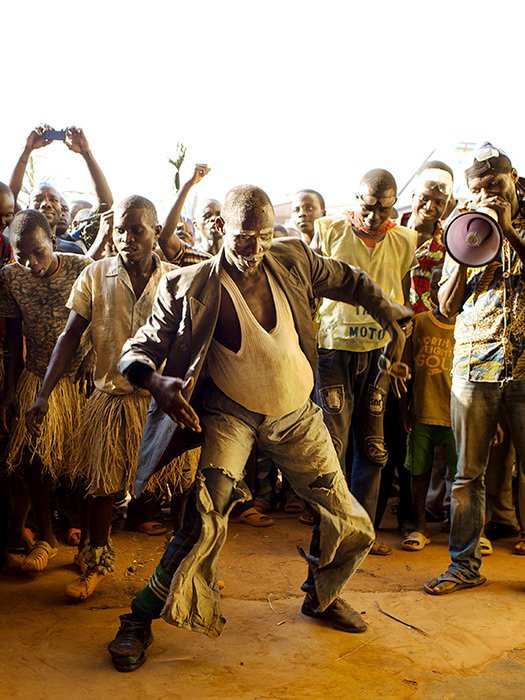 Mobaye, Central African Republic. A man disguised as pregnant woman dances to welcome candidate Anicet Georges Dologuelé, who is running for president, at Mobaye airport. © William Daniels
Mobaye, Central African Republic. A man disguised as pregnant woman dances to welcome candidate Anicet Georges Dologuelé, who is running for president, at Mobaye airport. © William Daniels
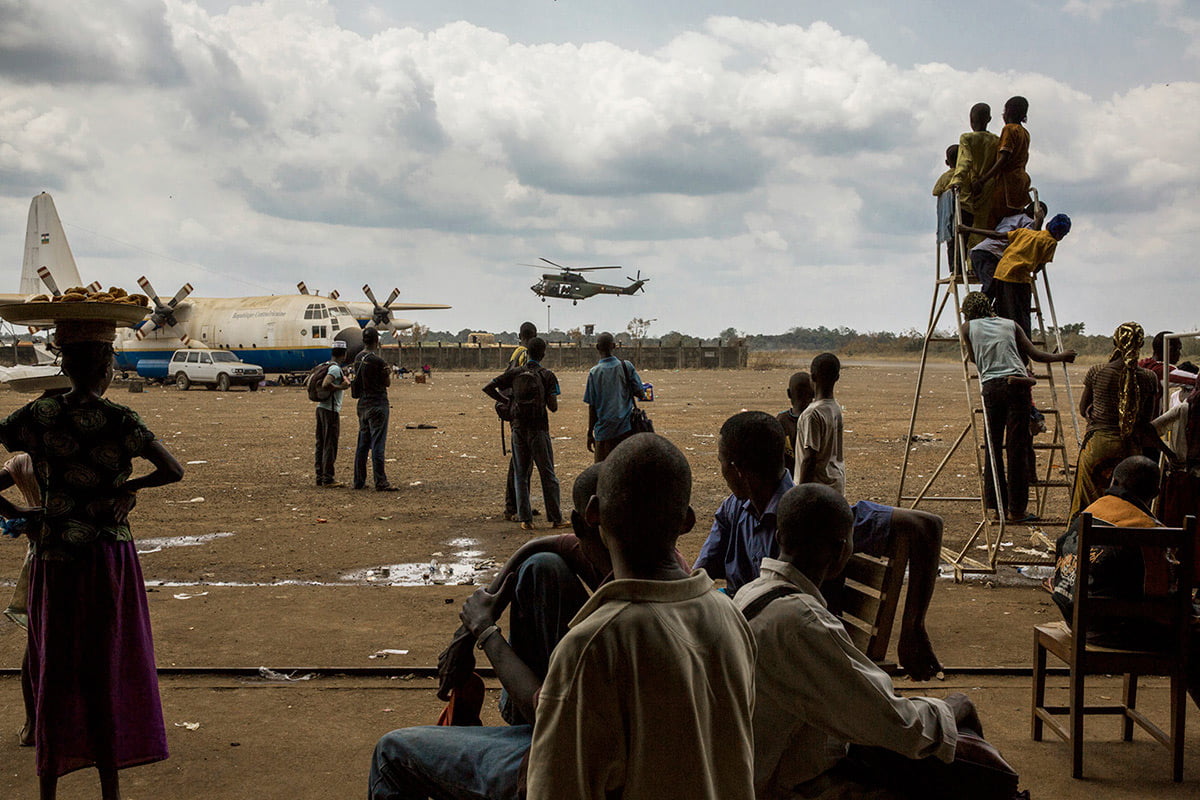 Bangui, Central African Republic. A French army helicopter lands at M’Poko International Airport watched by a group of Muslims waiting for evacuation. © William Daniels
Bangui, Central African Republic. A French army helicopter lands at M’Poko International Airport watched by a group of Muslims waiting for evacuation. © William Daniels
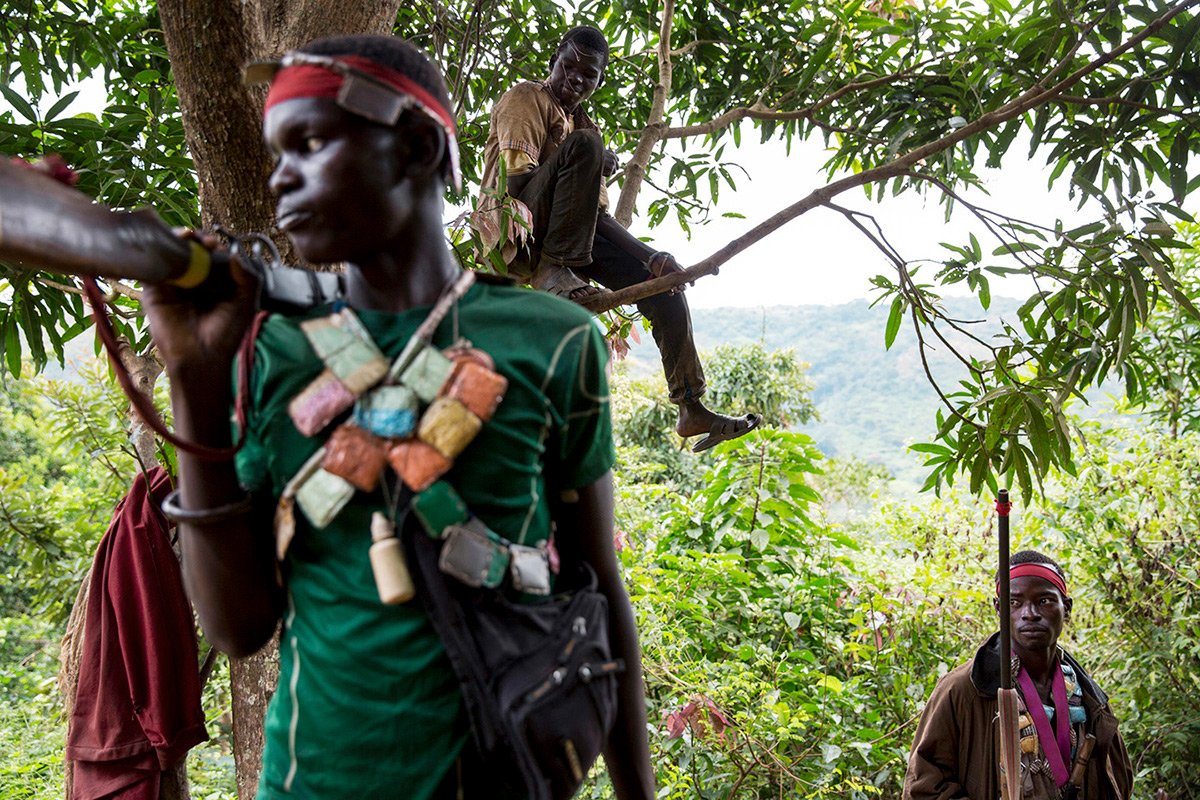 Near Bangui, Central African Republic. A group of Anti-Balaka (Christian self-defence militia) fighters hiding in the bush near Bangui. The day after this image was taken the Anti-Balaka militia launched a major attack on the outskirts of Bangui, the capital, against the mainly Muslim Seleka militia. The attack and its reprisals lead to an estimated 1000 dead and 160,000 people being displaced in Bangui. © William Daniels
Near Bangui, Central African Republic. A group of Anti-Balaka (Christian self-defence militia) fighters hiding in the bush near Bangui. The day after this image was taken the Anti-Balaka militia launched a major attack on the outskirts of Bangui, the capital, against the mainly Muslim Seleka militia. The attack and its reprisals lead to an estimated 1000 dead and 160,000 people being displaced in Bangui. © William Daniels
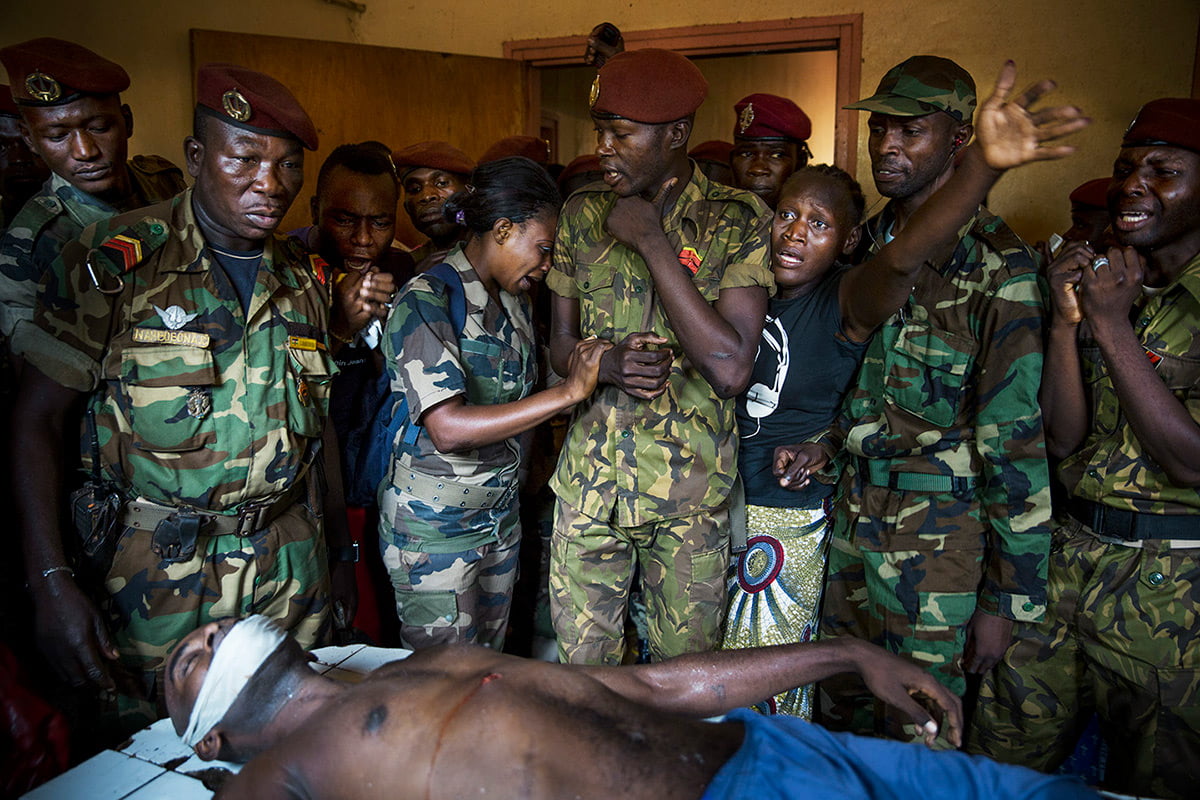 Bangui, Central African Republic. Army soldiers (FACA) mourn the death of a colleague, who was killed by members of the Seleka rebel group. © William Daniels
Bangui, Central African Republic. Army soldiers (FACA) mourn the death of a colleague, who was killed by members of the Seleka rebel group. © William Daniels
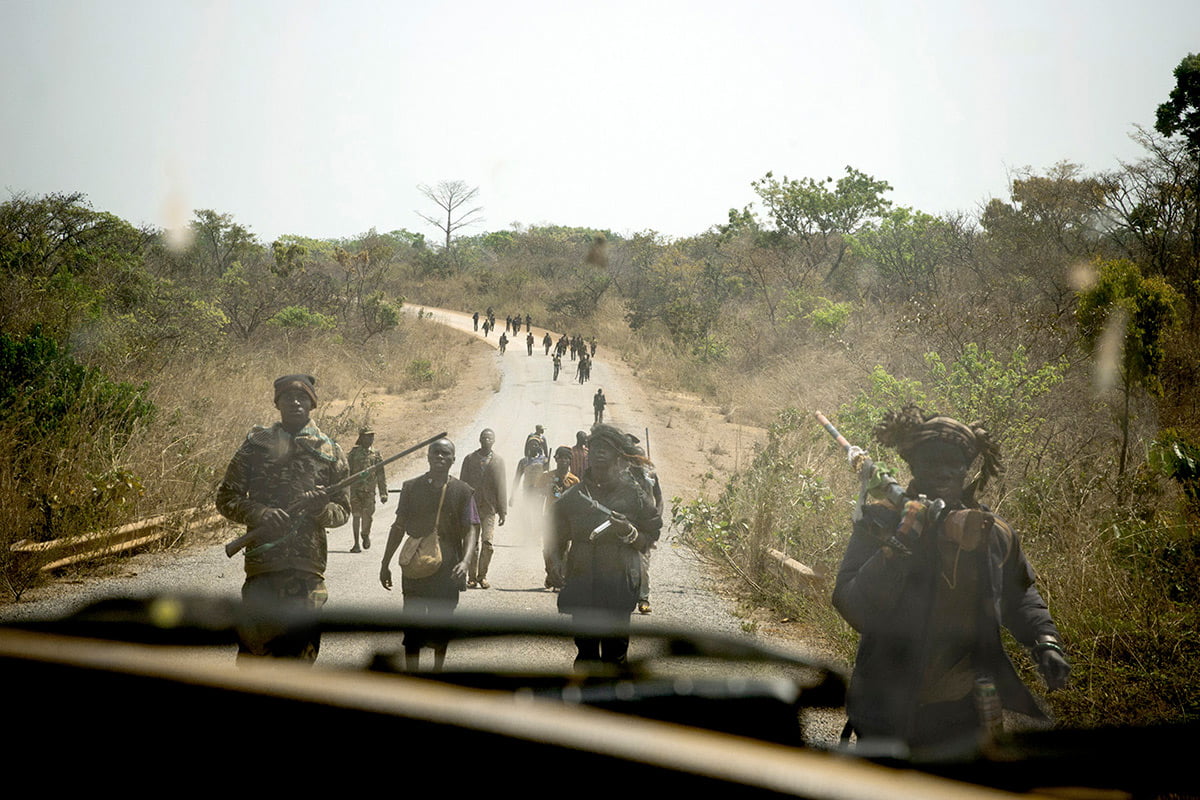 Between Bossemtpele and Zawa Part of a group of several hundred of Anti-Balaka militias return from an attack on a Fulani – a Muslim ethnic group village. © William Daniels
Between Bossemtpele and Zawa Part of a group of several hundred of Anti-Balaka militias return from an attack on a Fulani – a Muslim ethnic group village. © William Daniels
 Bangui, Central African Republic. A relative cry on the death of a man who was shot dead by Seleka militiamen the night before. © William Daniels
Bangui, Central African Republic. A relative cry on the death of a man who was shot dead by Seleka militiamen the night before. © William Daniels
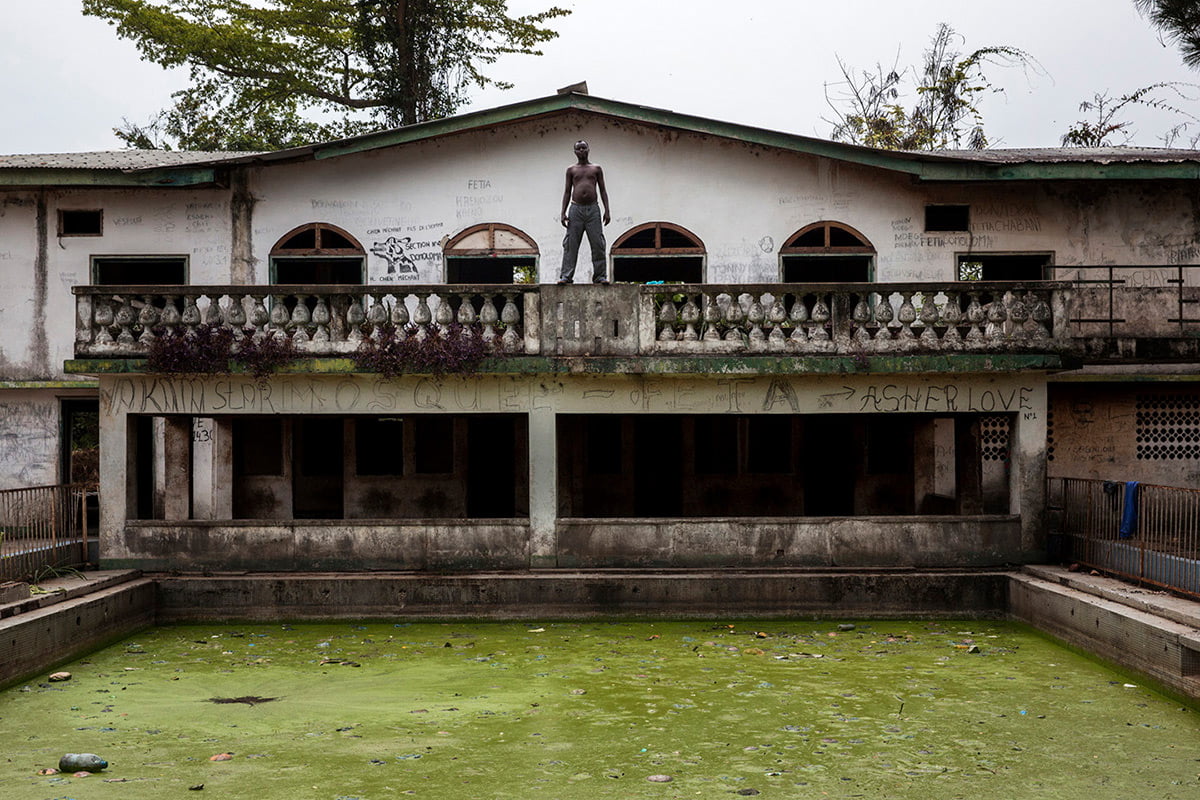 Bangui, Central African Republic. A man stands on the balcony of a building that once belonged to Emperor Bokassa. © William Daniels
Bangui, Central African Republic. A man stands on the balcony of a building that once belonged to Emperor Bokassa. © William Daniels
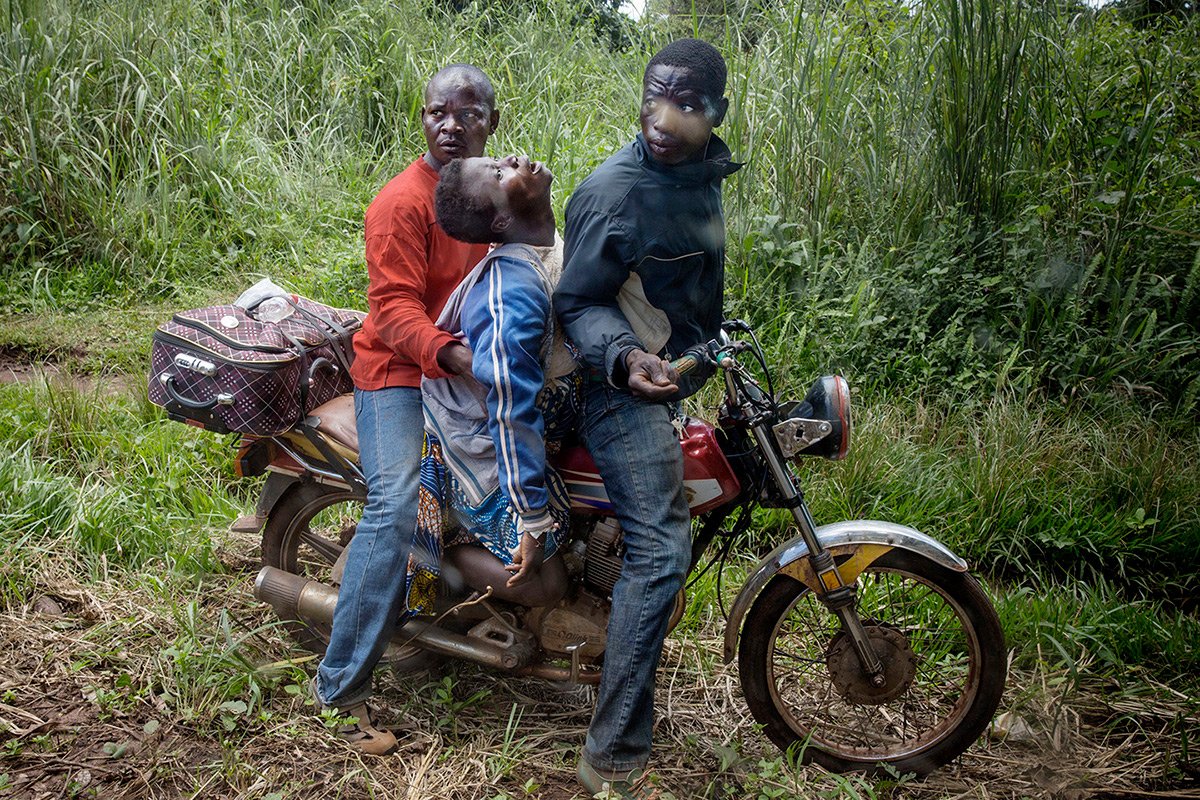 Near Berberati, Central African Republic. A pregnant woman who is experiencing complications is transported on a motorbike for two hours from Amada Gaza, where health provision is minimal. © William Daniels
Near Berberati, Central African Republic. A pregnant woman who is experiencing complications is transported on a motorbike for two hours from Amada Gaza, where health provision is minimal. © William Daniels
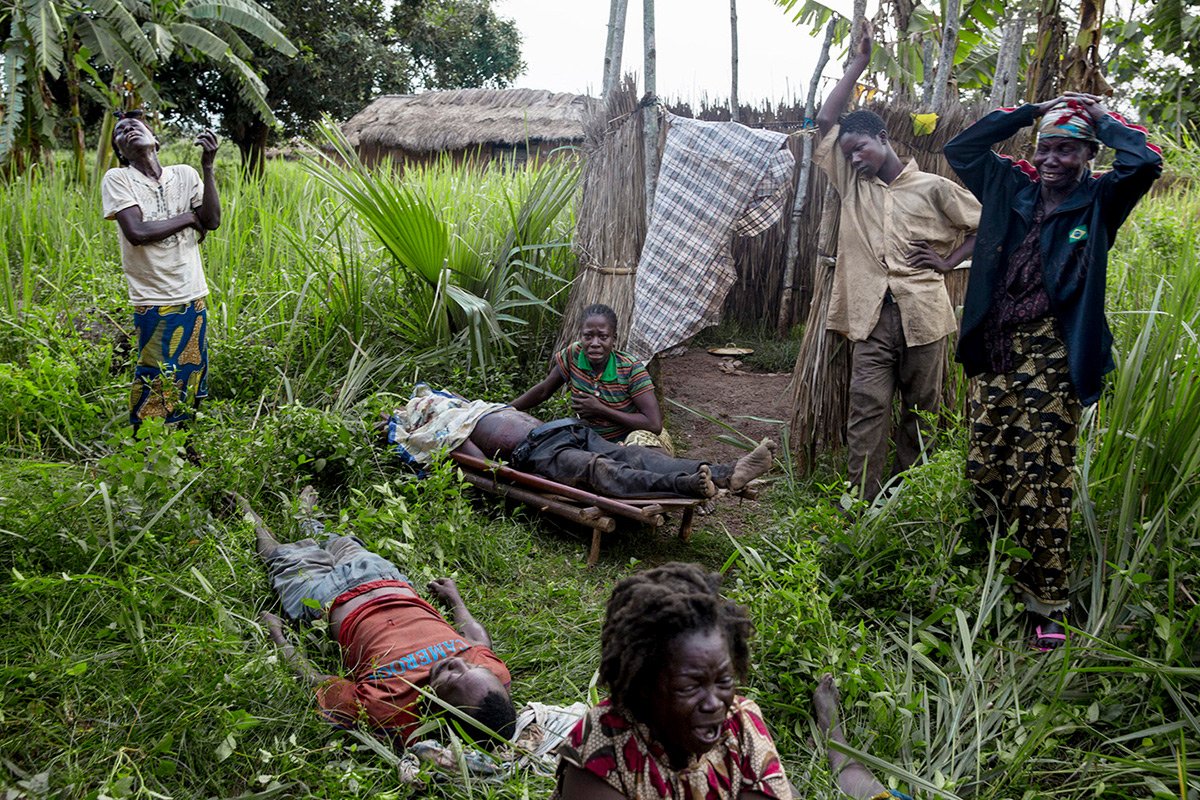 Gulinga, Central African Republic Relatives mourn the death of two men and one woman, murdered by Seleka fighters shortly before. © William Daniels
Gulinga, Central African Republic Relatives mourn the death of two men and one woman, murdered by Seleka fighters shortly before. © William Daniels
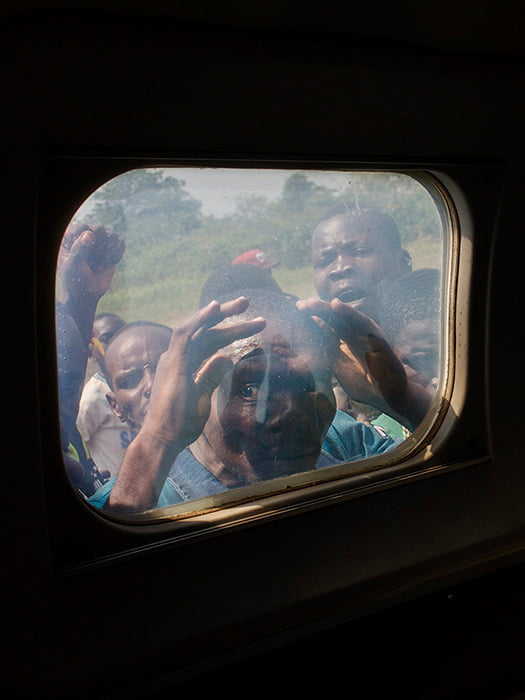 Carnot, Central African Republic. A man looks through the window of presidential candidate Karim Meckassoua’s aeroplane. He complains of not being paid for the security service he claims he provided during the meeting in Carnot. © William Daniels
Carnot, Central African Republic. A man looks through the window of presidential candidate Karim Meckassoua’s aeroplane. He complains of not being paid for the security service he claims he provided during the meeting in Carnot. © William Daniels
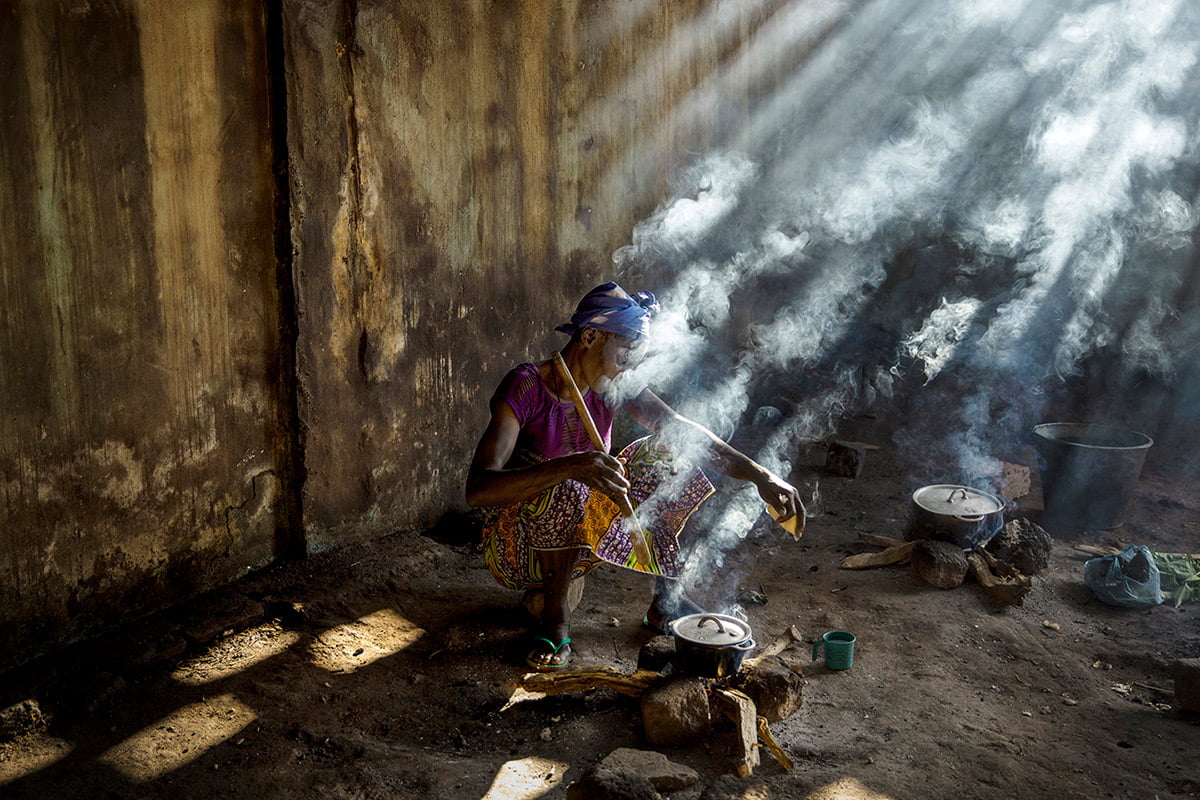 Bambari, Central African Republic. A woman cooks in the Bambari hospital compound. © William Daniels
Bambari, Central African Republic. A woman cooks in the Bambari hospital compound. © William Daniels
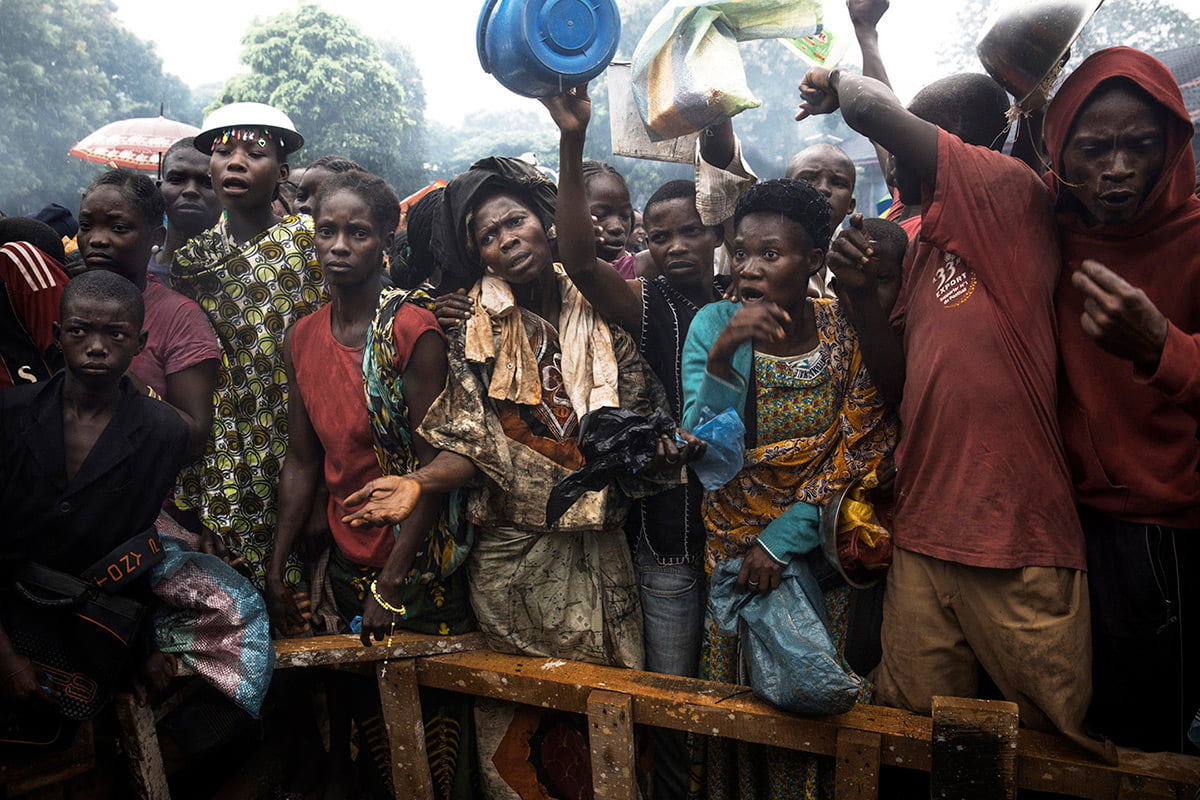 Bangui, Central African Republic. Internally displaced people (IDP) queue for food at a Don Bosco centre in Bangui. Food supplies are low and there is not enough for everyone. Some 18,000 Christian IDPs took refuge here, fearing violence from mainly Muslim Seleka fighters who have been clashing with Christian Anti Balaka fighters in the capital, Bangui. © William Daniels
Bangui, Central African Republic. Internally displaced people (IDP) queue for food at a Don Bosco centre in Bangui. Food supplies are low and there is not enough for everyone. Some 18,000 Christian IDPs took refuge here, fearing violence from mainly Muslim Seleka fighters who have been clashing with Christian Anti Balaka fighters in the capital, Bangui. © William Daniels
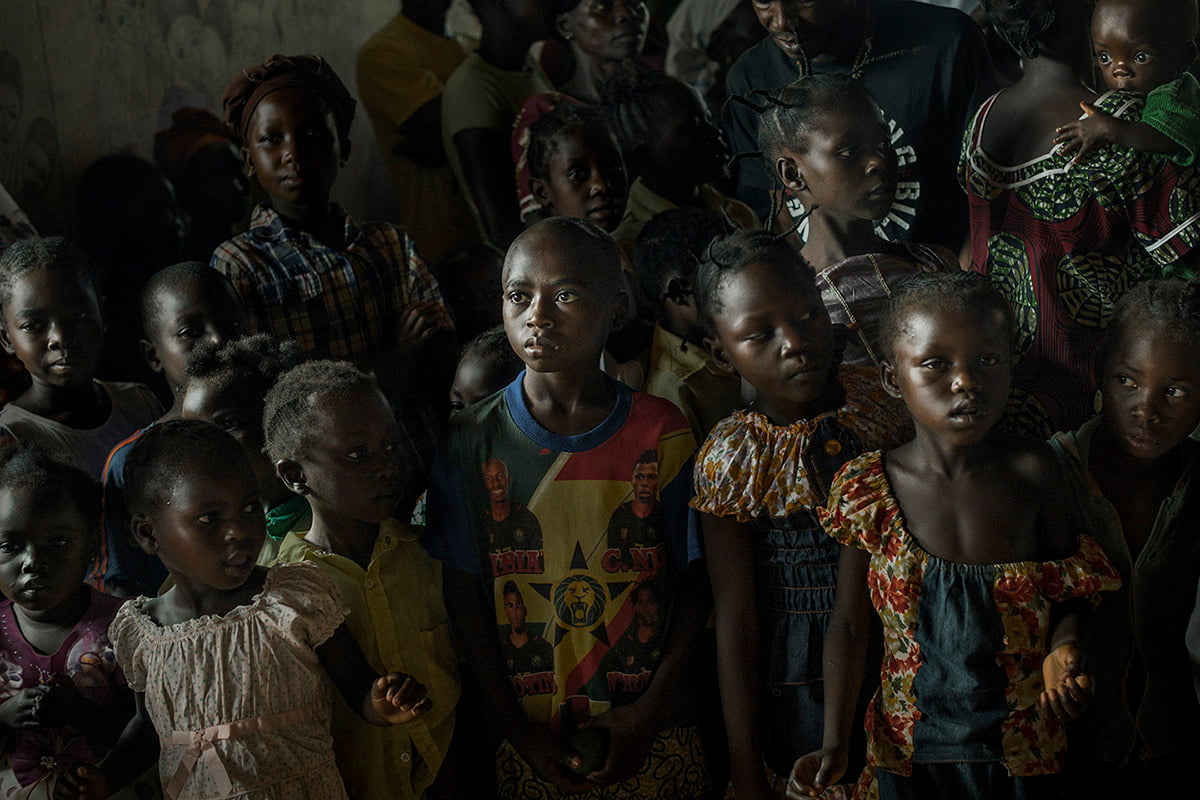 Carnot, Central African Republic. Christian children during Sunday mass in Carnot church. © William Daniels
Carnot, Central African Republic. Christian children during Sunday mass in Carnot church. © William Daniels
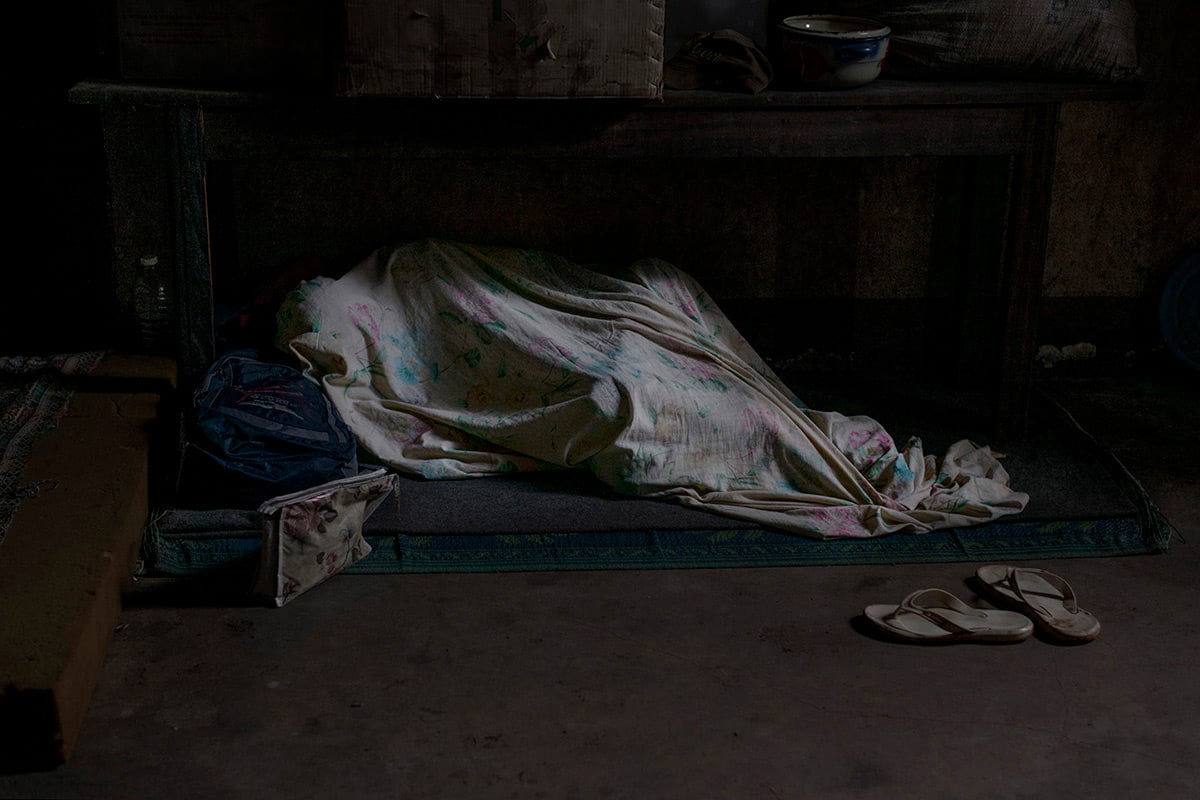 Carnot, Central African Republic. A Muslim man sleeps beneath a sheet in a building inside the compound of a church, where 500 Muslims took refuge 22 months ago, following violence by anti-Balaka militias. They live in bad sanitary conditions with little food and if they leave the compound they risk being attacked again. © William Daniels
Carnot, Central African Republic. A Muslim man sleeps beneath a sheet in a building inside the compound of a church, where 500 Muslims took refuge 22 months ago, following violence by anti-Balaka militias. They live in bad sanitary conditions with little food and if they leave the compound they risk being attacked again. © William Daniels
 Zawara, Central African Republic. The Archbishop of Bangui, Monseignor Dieudonne Nzapalainga, offers blessings to anti-Balaka militiamen and call on them to lay down their weapons and abandon violence, in Zawara. © William Daniels
Zawara, Central African Republic. The Archbishop of Bangui, Monseignor Dieudonne Nzapalainga, offers blessings to anti-Balaka militiamen and call on them to lay down their weapons and abandon violence, in Zawara. © William Daniels
 Carnot, Central African Republic. Gold miner. © William Daniels
Carnot, Central African Republic. Gold miner. © William Daniels
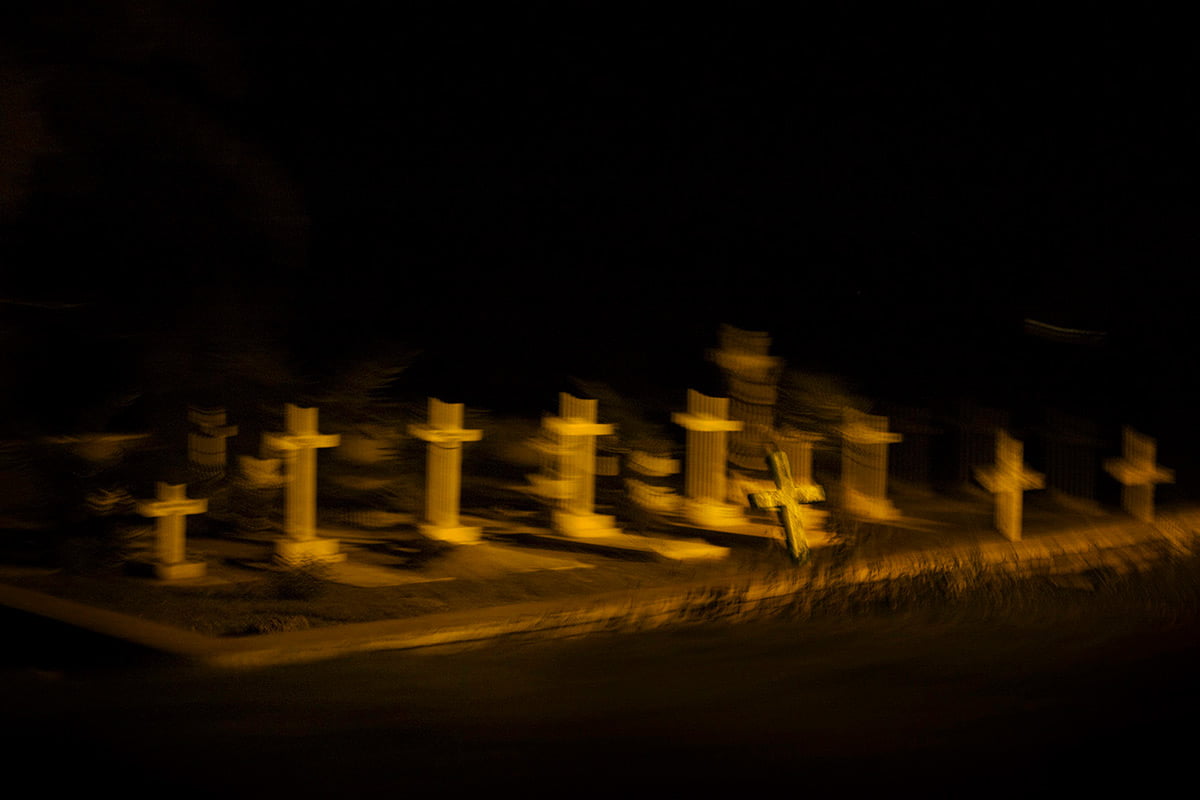 Bangui, Central African Republic. Christian cemetery in Bangui. © William Daniels
Bangui, Central African Republic. Christian cemetery in Bangui. © William Daniels
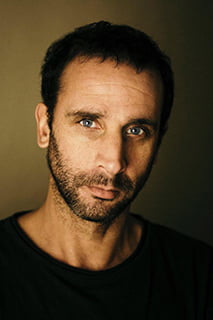
William Daniels
William is a French documentary photographer based in Paris. His work revolves around social issues and humanitarian concerns mostly focusing on isolated or fragile communities.
He is a regular contributor to National Geographic Magazine for which he spent several months working on various projects. In 2018, he became a grantee from the National Geographic Society.
In 2007 William received the Jean-Luc Lagardère Foundation Fellowship which allowed him to document the nascent developments toward democracy in Kyrgyzstan. In 2008 William produced Mauvais Air, a reportage on malaria which was photographed in seven countries and exhibited in September 2008 on the Pont des Arts in Paris and in the European Parliament in 2011.
From 2013 until 2016 William worked on largely forgotten crisis in the Central African Republic. Over 10 trips to the country, William told the story of the conflict through ordinary people, the forgotten and vulnerable. In 2014, as part of the official program of the Nuits Blanches in Paris, William exhibited a 100-meter long display of images from the Central African Republic along the Seine. A similar installation was set up in 2016 in Brooklyn, New York.
He is also the author of 4 books, Mauvais Air (2008), Faded Tulips (2012), RCA (Central African Republic 2017) and Wilting Point (2019).
William’s work has been recognised by numerous international prizes including two World Press Photo awards, the humanitarian Visa d’Or at Visa pour l’image festival in France, the prestigious Tim Hetherington Grant from the World Press Foundation, the Lagardère Foundation grant and the master award of the Festival of Ethical Photography in Italy.
Have a look into his others works on his personal website or Instagram.
